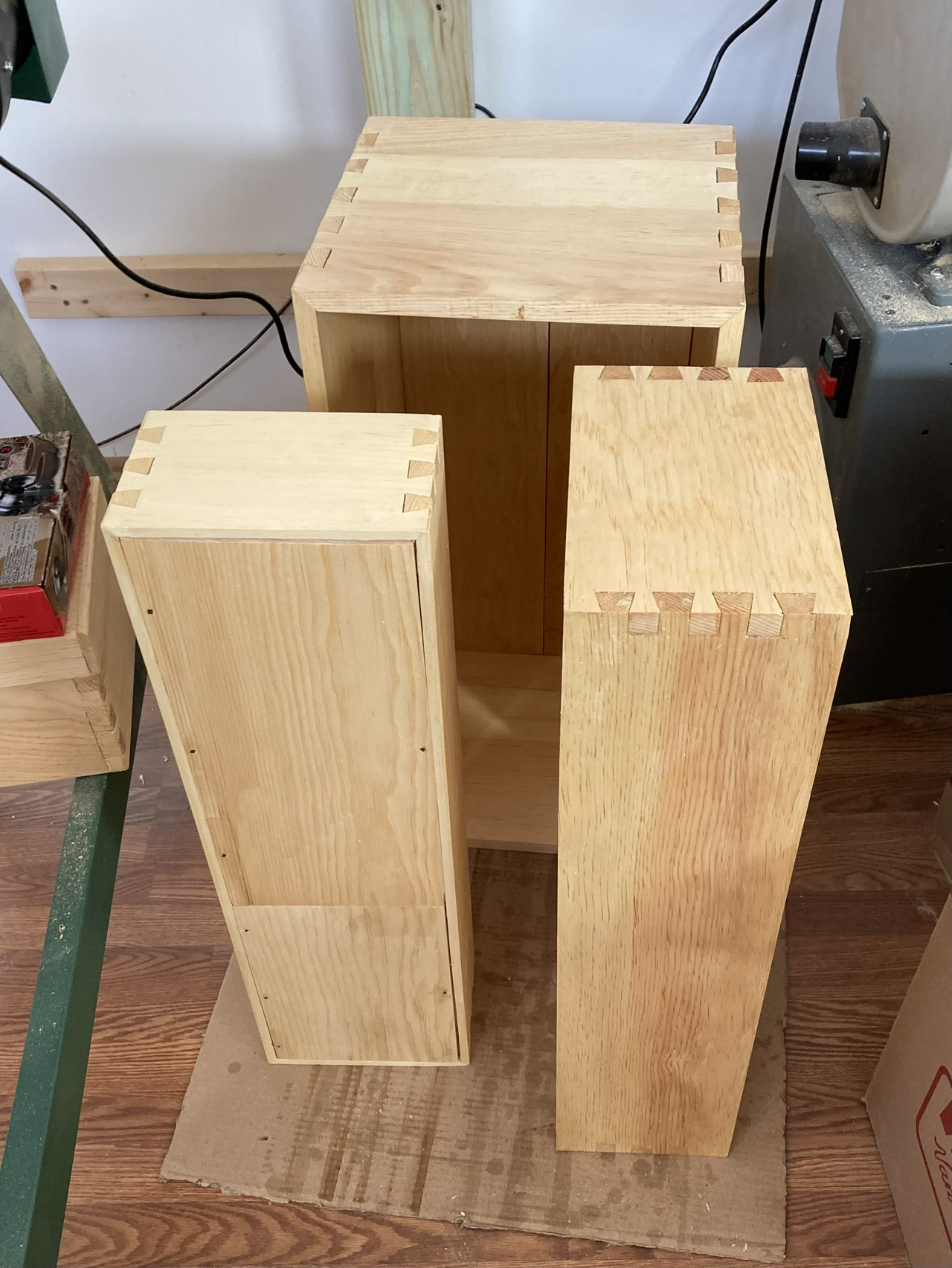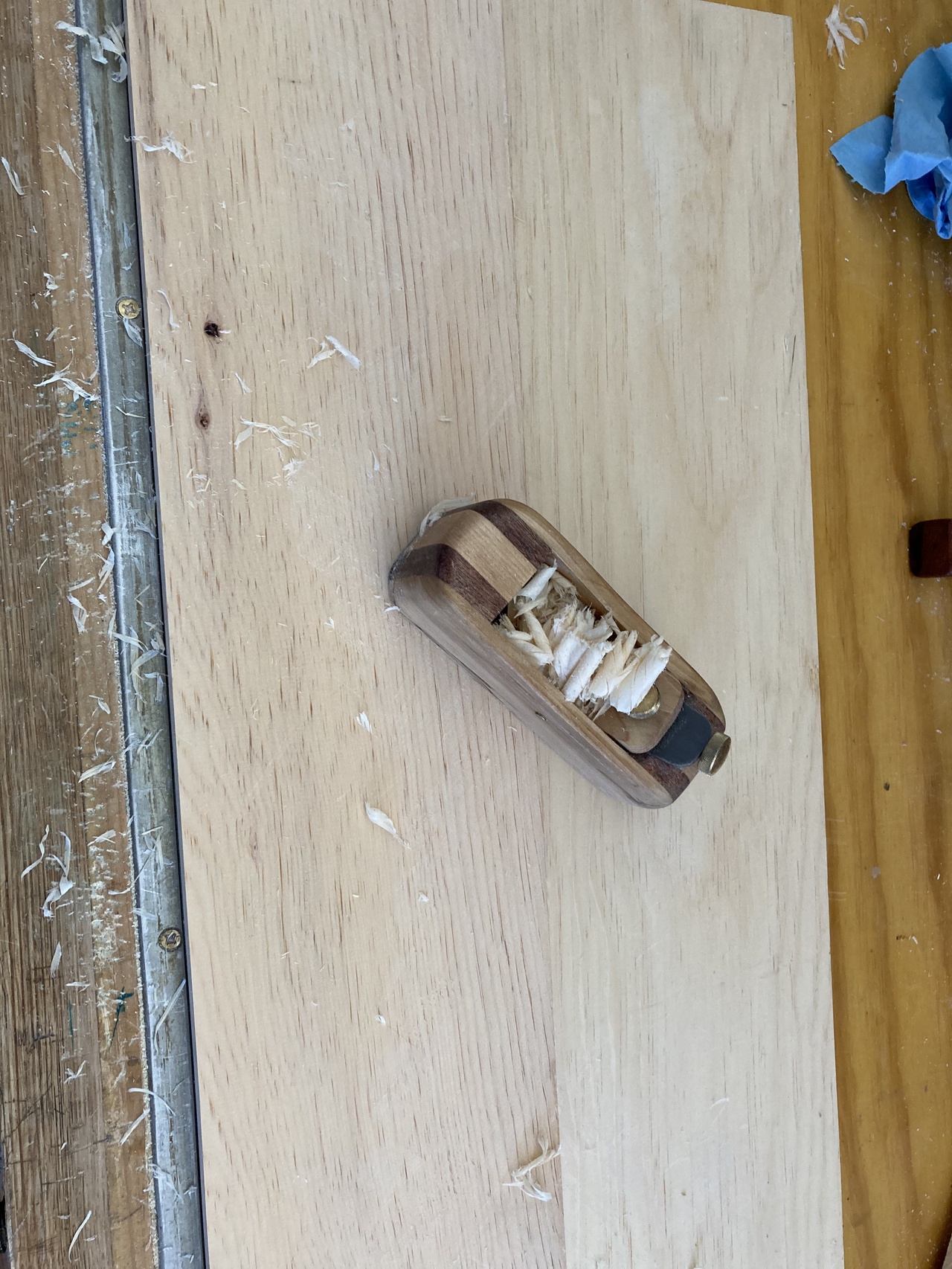Jefferson Bookcases – Three Sizes of Plinths
Originally written Nov 23, 2020
I made a big case recently, and since that will be at the bottom of a stack of cases of books, I needed to make a special-sized plinth for it. And I have a spot behind the bedroom door where I will build a stack of cases with the largest case being the middle-sized case, so I needed a smaller plinth to hold that.
The nice thing about building other sizes of plinths is that they're all the same width, so the front, back and glue-blocks are all the same, it's just the sides that change to accommodate the different depths of cases.

As before, the plinths have the following measurements:
Front and back: 2 – 1×4×31 Internal front brace: 1 – 1×4×29½ Glue blocks (front): 2 – 1×1×2⅝ Glue blocks (rear): 2 – 1×1×3⅜
And the sides for the various sizes of plinths are: Small: 2 – 1×4×8¼ Medium: 2 – 1×4×12 Large: 2 – 1×4×15¼
I used the same template for constructing the curve on the front piece, and the same template for the dovetails. As before, the tops of the pieces got a chamfer equal to 8 passes of my block plane at whatever thickness it was set to before. I'm not sure of the exact measurement, but it looks right.

With the dovetails cut and everything glued up, I smoothed the sides with my smoothing plane and hit everything with shellac. A second coat of shellac after a quick pass with the 400 grit sandpaper, and they'll be done and ready to hold more stacks of cases.

Jefferson Bookcases Contents #woodworking #bookcases #cutList
Discuss... Reply to this in the fediverse: @davepolaschek@writing.exchange
















































